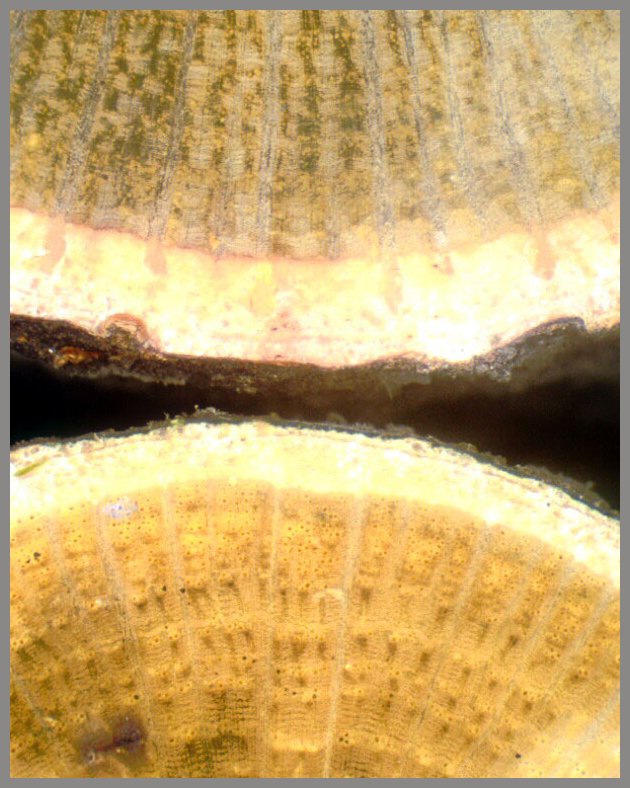

Sapwood - Sapwood, is the term given to the wood that maintains a symplast. The symplast is held in place by the apoplast. Sapwood can range from 2 growth increments to over 100. In other words, some tree species have parenchyma cells that only live for 2-3 years while other may have cells that live for over a hundred years. There are two types of sapwood, "conducting" and "non-conducting". Sapwood in many tree species maintains only a single growth increment that has open vessels. Yet, non-conducting wood still maintains a symplast. A distinction needs to be made between sapwood that is conducting and sapwood that is not conducting. Wood that maintains a symplast yet the vertical transport system is plugged, we call non-conducting sapwood. Sapwood has four major functions: 1) transport; 2) storage; 3) mechanical support; 4) protection and defense. The living cells of sapwood store energy reserves. The reserves are the carbohydrates that are the building blocks for a great number and variety of antimicrobial substances. The sapwood makes up the dynamic mass of the woody part of the tree.
Click here for pictures of non-conducting sapwood.
See A CLOSER LOOK AT TREES, SHIGO)
Dictionary MAIN
PAGE
Text & Graphics Copyright © 2007
Keslick & Son Modern Arboriculture
Please report web site problems, comments and words of interest,
not found.
Contact